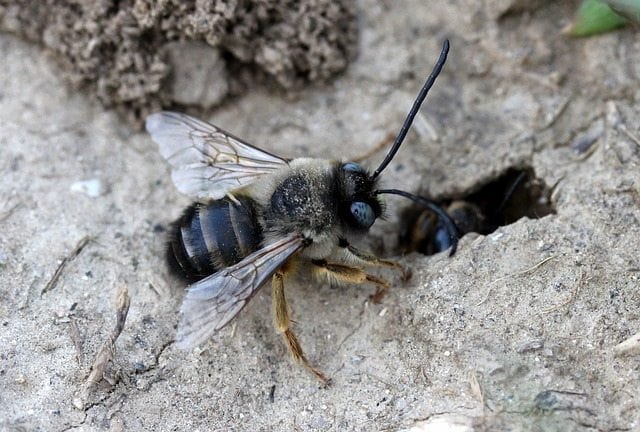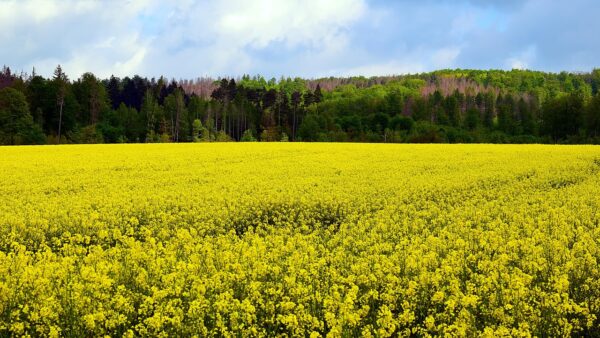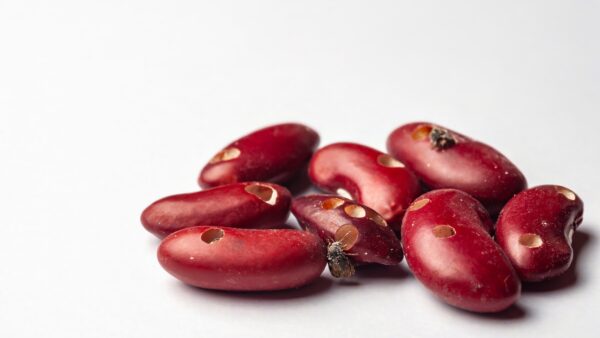Half of all wild bee species are under threat of extinction in the Netherlands. 188 of the 358 species found here are currently on the red list (Dutch) of threatened species. A large number of hoverflies are also disappearing at an alarming rate. Why is this happening? Why is it a problem? And what can we do about it?
Many different kinds of bees
Bees come in many different shapes and sizes. The most famous bee is the honey bee, which is kept by people. In the wild you’ll find mining bees, mason bees, leafcutter bees and bumblebees. Their differences are apparent in their names. Mining bees love dry and warm areas and love to mine in open, sandy soils near bushes. Mason bees use mud, saliva and water to create a type of cement that they use to build nests in hollow spaces such as holes in window and doors frames, abandoned beetle burrows and holes in tree-stumps. Leafcutter bees are named for the habit of the females to decorate their nest cells with pieces of leaves that they cut out using their jaws. And finally, the bumblebees which are round, furry, colourful buzzers.
Different needs
One of the reasons that so many species of bees are disappearing, is that they cannot find sufficient food or opportunities to nest. In addition to various nesting requirements, some bees also prefer certain flowers. Furthermore, certain flowers require various types of pollinators. Wild bees tend to be more efficient pollinators than honey bees while many wild bees will also not fly further than 150 to 500 metres between their food sources and their nest. This means that their food sources and nest must be within a short distance of one another, which is not often the case these days. Moreover, pesticides and climate change also play a role in the decline of bees.
Loss of biodiversity and pollinators
If half of the bee species were to disappear, that would be a significant loss to biodiversity. It is also a problem for nature and agriculture. Wild bees are important pollinators for wild flowers, bushes, trees and for many food crops. For example, they are responsible for more than half of the total harvest in the cultivation of Elstar apples. These pollinators are also an important part of the cultivation of pears, strawberries and blueberries.
The solution
In order to create enough living space for bees, we need to make adjustments to our landscape. We need more flowers and places to nest, more ‘messy’ edges and corners.
Government and a wide variety of organisations have developed the Nationale Bijenstrategie (Dutch) (national bee strategy) to counter the loss of our bees. More than fifty parties have joined this initiative and this number continues to grow.
Researchers from Wageningen University & Research support anyone who wants to help wild bees through the Kennisimpuls Bestuivers (Dutch) (knowledge boost for pollinators), by providing knowledge about what you should do at which spot and which types of bees you can help with which plants and which type of management. They work with colleagues from the Naturalis Biodiversity Center and EIS Kenniscentrum Insecten (Dutch) to do so.
Activities
“Farmers may predominantly benefit from having more pollinators around, but it is clear that bees and hoverflies need far more living area than farmers can offer them. It is therefore incredibly important that as many people as possible undertake activities that help our pollinators”, explains ecologist and project leader Arjen de Groot from Wageningen Environmental Research. ‘There is already a great deal of knowledge about what bees need, but for people who want to do something, this knowledge is still too fragmented and complicated. Therefore, we adapt and combine this knowledge for specific target groups.’
They are going to compose a manual with basic rules for choosing and creating a living area that is suitable for wild bees. For example, if you want food crops to be pollinated, it is important that there is plenty of food for the bees before and after flowering. ‘It’s not all that complicated and you can already make a significant contribution with just a few simple measures. But there are some details to which you need to pay attention’, warns De Groot.
Five tips:
- When planting flowers, use indigenous plant species (Dutch) and avoid exotic garden plants, as our bees are often unable to extract nectar from these plants.
- Use perennial plants. These are more valuable to bees and don’t have to be replanted every year.
- Ensure that you cut vegetation regularly and dispose of the cuttings, or your flowerbed will turn into a patch of grass in just a few years.
- But don’t cut everything at the same time, so that insects can always find food and shelter. Bee-friendly cutting (Dutch).
- Create nesting dikes (Dutch). Just a few bee species nest in bee hotels, most nest underground.
The researchers are also heading up six regional initiatives in which various parties work together. These include a practical network of apple growers in Betuwe and a bee preservation landscape project (Dutch) on the Brabantse Wal (wall of Brabant). ‘We are testing measures here as well’, says De Groot.
Help desk
Through the Kennisimpuls, WUR also offers a help desk (Dutch) for questions about creating, managing and organising landscapes for wild pollinating bees. Researchers can always stop by for advice.
This year, researchers consulted with Leidingenstraat Nederland (LSNed). This company manages a barrier-free pipeline route between the industrial areas of Rotterdam and Moerdijk towards Vlissingen and Antwerp. This underground highway of pipelines is 80 kilometres long and 100 metres wide and is mostly used as meadowlands or arable land. The recommendations concerned the construction of a wooded bank and how to build it and what trees to use and a cutting regime.
Funding
The Dutch Ministry of Agriculture, Nature and Food Quality funds Kennisimpuls Bestuivers. The Ministry also funds the Kennisimpuls Groene Gewasbescherming (Dutch) (knowledge boost for green crop protection) which focuses on making crop protection more sustainable and faster. Within this context, Wageningen University & Research is developing new cultivation systems which make strawberries, lilies, apples and arable crops far less reliant on chemical crop protection.
Further reading
Learn more about biodiversity and the research that is being conducted by Wageningen University & Research in this longread.
Source: Wageningen University & Research










